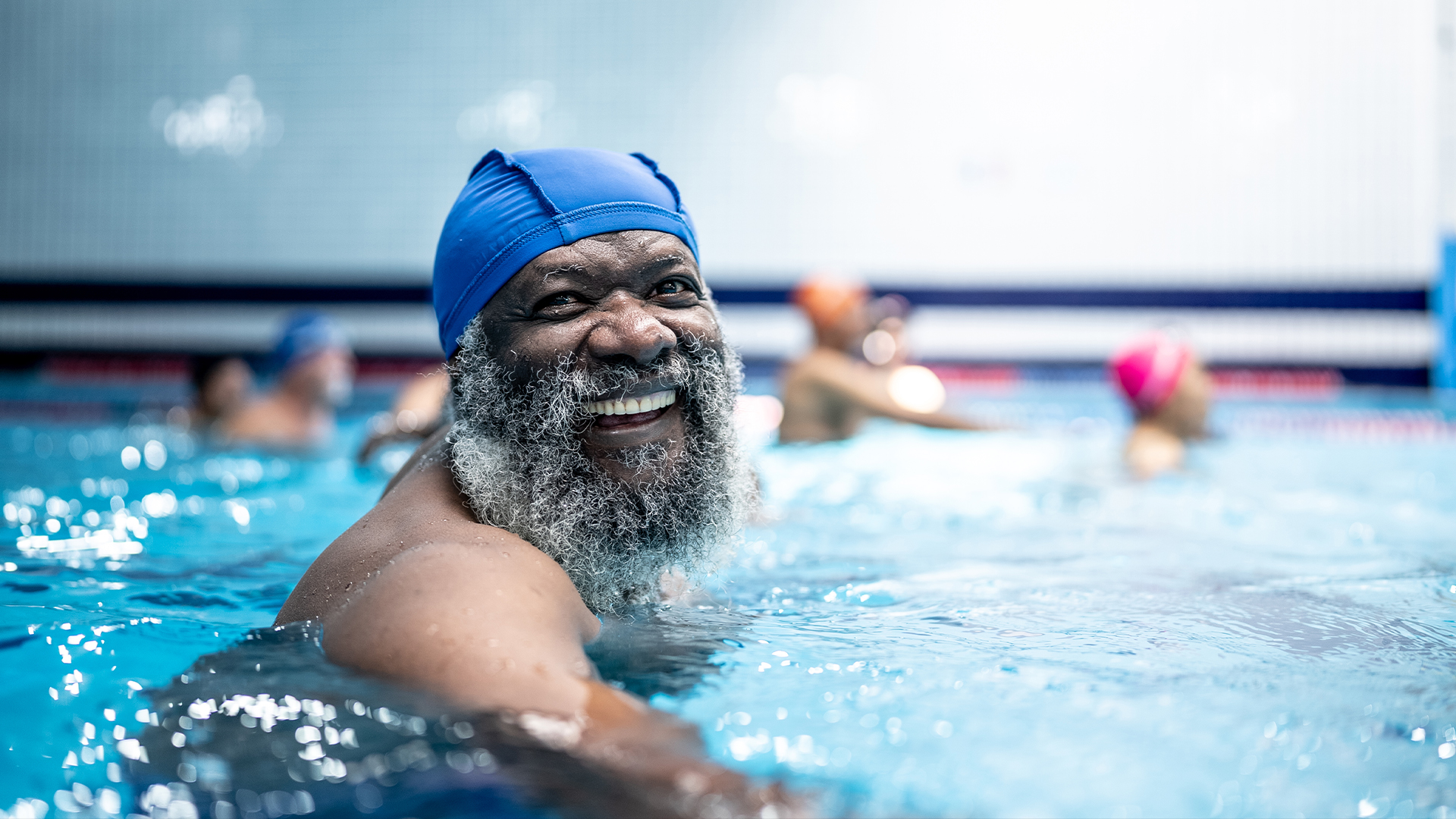Exercise may reverse sign of aging by 'flushing' fat from muscle
Researchers say they've identified a kind of fat that plays a major role in aging and can be controlled with short-term exercise.

The science of why we age is a hot topic, with studies pointing to changes in our chromosomes, cellular stress and epigenetics as culprits. These changes are difficult to reverse with treatments — but what if there were a molecular cause of aging that we could change more easily?
In a study published Friday (April 12) in the journal Nature Aging, researchers may have identified a particular kind of fat molecule, or lipid, that plays a major role in the aging process. This lipid, called bis(monoacylglycero)phosphate (BMP), was found at consistently higher levels in the muscles of older people than in those of younger people. And notably, those high levels fell with short periods of exercise. The researchers also studied this effect in more detail in mice.
Aging research lacks detailed studies of fat molecules, "so it was great to see this study doing such a comprehensive analysis of the changes in many different tissues in mice and humans," Dr. Alexandra Stolzing, a professor of biogerontological engineering at Loughborough University who was not involved in the study, told Live Science in an email.
Related: 'Biological aging' speeds up in times of great stress, but it can be reversed during recovery
Creating a map of fat
Scientists generally understand how simple fats, such as cholesterol, contribute to aging and diseases like coronary artery disease. However, "little is known on how 'complex' lipids contribute," said Dr. George Janssens, an assistant professor of genetic metabolic disease at Amsterdam UMC and first author of the study.
The researchers started exploring this relationship by analyzing the fats of young and old mice. Using "lipidomics" — a technology that quantifies the many different fats in the same tissue simultaneously — they looked at 10 different tissues and identified more than 1,200 unique types of lipids.
What jumped out at them was the consistent increase of BMP in old mice, which they saw across most of the tissues analyzed.
Get the world’s most fascinating discoveries delivered straight to your inbox.
The researchers then analyzed muscle tissue biopsied from human volunteers of different ages; younger participants were 20 to 30 years old while older participants were ages 65 to 80. Again, they found that BMP accumulated in the aging tissue.
"The nearly tissue-wide accumulation of one lipid in mice, and the same change conserved in human muscle … was astonishing," Janssens told Live Science in an email. The results suggest that BMP lipids may be a driving force in the aging process — however, more research is needed to determine whether they actually drive aging or rather increase as a result of it.
An hour a day keeps the lipids away
Evidence suggests that even short bouts of daily exercise reduce people's risk of early death. And in general, exercise has been closely linked with improvements in longevity, with one explanation being that it tends to change how the body breaks down lipids.
Related: Extreme longevity: The secret to living longer may be hiding with nuns ... and jellyfish
In a second phase of their study, the researchers analyzed the lipid content in people's muscles once before and once after they exercised one hour a day for four days. They compared these numbers with those of people who remained seated for most of that time period.
Surprisingly, even within such a short time frame, BMP levels were significantly reduced in those who exercised versus those who were sedentary. This suggests this lipid could be a key player in the benefits of exercise on longevity.
"This study is intriguing" because the researchers discovered that this fat increases with age in both mice and humans, said Adiv Johnson, director of research and innovation at the longevity company Tally Health, who was not involved in the study. But the findings also show that exercise — "a powerful pro-longevity intervention" — can deplete this age-related fat in humans, he told Live Science in an email.
"The idea that we could reverse aging is something that was long considered science fiction," senior study author Riekelt Houtkooper, a professor of genetic metabolic diseases at Amsterdam UMC, said in a statement. "But these findings do allow us to understand a lot more about the aging process."
The scientists plan to conduct further studies to learn why BMP accumulates in the first place and whether methods other than exercising could deplete BMP.
Until then, the study provides one hint as to why going for a walk or run around the neighborhood might help us live just a little longer. For those who are physically unable to exercise, there could be other solutions on the horizon, as some scientists are working on drugs to mimic the helpful effects of physical activity.
This article is for informational purposes only and is not meant to offer medical advice.
Ever wonder why some people build muscle more easily than others or why freckles come out in the sun? Send us your questions about how the human body works to community@livescience.com with the subject line "Health Desk Q," and you may see your question answered on the website!

Jennifer Zieba earned her PhD in human genetics at the University of California, Los Angeles. She is currently a project scientist in the orthopedic surgery department at UCLA where she works on identifying mutations and possible treatments for rare genetic musculoskeletal disorders. Jen enjoys teaching and communicating complex scientific concepts to a wide audience and is a freelance writer for multiple online publications.


